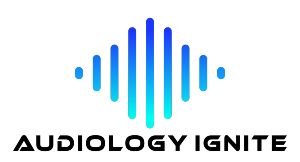Local SEO makes a hearing center discoverable for “near me” searches and on Google Maps—where most appointment-ready patients look first. Optimizing business listings, collecting positive reviews, and publishing localized content increases visibility and credibility.
High-intent local queries deliver immediate opportunities, making this the most valuable and cost-efficient marketing channel for clinics. Maintaining accurate data across directories and encouraging consistent patient feedback sustain visibility over time.
How Does Keyword Research Target Audiology-Specific Patient Needs?
Effective keyword research organizes search terms by intent:
Awareness: symptoms like “ringing in ears” or “difficulty hearing in crowds.”
Consideration: comparisons such as “best hearing aids for seniors.”
Decision: service-based searches like “hearing test near me.”
Mapping content to these stages helps clinics capture interest at every step of the patient journey. Targeting condition-specific and service-based keywords improves both traffic quality and appointment conversion.
What Technical SEO Practices Improve Website Performance?
Technical SEO strengthens both discoverability and user experience. Priorities include:
Mobile-first responsive design.
Compressed images and optimized scripts for faster load times.
HTTPS security and fixed crawl errors.
Schema markup for services and FAQs.
These improvements enhance usability for older users, increase ranking potential, and raise conversion rates—all key to a solid digital foundation.
How Can Social Media Marketing Drive Engagement and Patient Acquisition?
Social media amplifies trust and community engagement. Clinics can use educational posts, testimonials, and clinic-tour videos to humanize their brand and reduce stigma around hearing care. Paid social extends reach to caregivers and older audiences.
High-impact content includes:
Educational posts explaining conditions or treatment steps.
Short videos featuring patient success stories.
Staff introductions and community involvement highlights.
With clear calls-to-action linking to booking pages, social media becomes a consistent lead-generation tool.
What Are Effective Social Media Strategies for Hearing Aid Centers?
Consistency and relevance drive results. A balanced schedule of educational content, patient stories, and clinic updates maintains engagement. Visual accessibility—large fonts, captions, and friendly tone—improves reach among older users.
Clinics should monitor engagement metrics to identify which posts convert best and adjust their strategy quarterly. Participation in local online communities also boosts awareness and reputation organically.
How Does Social Media Advertising Support Audiology Practice Growth?
Paid social advertising expands audience reach through demographic and interest targeting. Video ads introduce the clinic, while retargeting campaigns remind previous visitors to schedule.
Key metrics: engagement rate, CPL, and conversion rate. Dividing budget between awareness and retargeting ensures efficient lead capture while maximizing visibility.
How Can Audiologists Use Content Marketing to Build Authority and Trust?
Content marketing builds authority by answering patient questions and showcasing clinical expertise. Condition-specific blogs, FAQs, and downloadable guides attract searchers researching symptoms or treatments.
Including patient stories and clinician profiles humanizes the brand, while gated resources (e.g., hearing-health checklists) capture leads for follow-up. Over time, consistent educational content establishes the clinic as the trusted expert in local hearing care.
What Role Does Paid Advertising Play in Audiology Practice Growth?
Paid advertising accelerates visibility, complementing organic and social efforts.
Google Search Ads: target high-intent local keywords such as “hearing test near me.”
Social Ads: use demographic targeting and lead forms to build awareness.
Retargeting Ads: re-engage visitors who viewed pages but didn’t book.
| Ad Channel | Purpose | Key Metrics |
|---|---|---|
| Google Search | Capture immediate intent | CPL, conversion rate |
| Social Ads | Build awareness & engagement | CPL, engagement rate |
| Retargeting | Re-engage warm audiences | Assisted conversions, ROAS |
The right ad mix shortens the conversion cycle and keeps marketing costs under control.
How Do Google Ads Strategies Attract More Patients?
Google Ads connect clinics with people actively searching for services. Effective strategies include using location extensions, call buttons for mobile, and landing pages optimized for fast booking.
Regularly testing ad copy, headlines, and keyword targeting refines performance. Excluding irrelevant search terms prevents wasted spend, ensuring budget efficiency and stronger ROI.
What Are Retargeting Campaigns and How Do They Improve Conversions?
Retargeting campaigns serve personalized ads to users who have already engaged but not converted. Segment audiences by behavior—educational readers, service-page visitors, or form abandoners—and deliver sequential messages such as:
Educational reminder → 2. Social proof/testimonial → 3. Scheduling incentive.
This layered approach nurtures familiarity and trust, improving overall conversion rates and lowering CPL.
How Does Website Design and User Experience Support a Strong Digital Foundation?
A website’s design directly affects patient trust and booking rates. Mobile responsiveness, fast load times, and easy navigation are critical for older demographics. Prominent CTAs and simple, 2-step booking forms minimize friction.
UX Optimization Benchmarks:
Load Time: under 3 seconds.
Booking Funnel: 2–3 steps maximum.
CTA Placement: visible above the fold and repeated on long pages.
Meeting these standards ensures that site visitors can quickly act—improving both conversion and satisfaction.
Why Is Mobile-First Design Crucial for Audiology Websites?
Most “near me” and symptom-based searches occur on mobile. Mobile-first design ensures seamless browsing, larger touch targets, and easy calling or form submission. It also strengthens local SEO and reduces bounce rates. Optimizing for mobile experience directly translates into more patient inquiries.
How Can Conversion Rate Optimization Increase Appointment Bookings?
CRO focuses on small improvements with large impact—shorter forms, clearer CTAs, and trust indicators like verified reviews or clinician credentials. A/B testing headlines, form lengths, and layouts reveals which changes produce more conversions.
Tracking metrics such as conversion rate, appointments, and CPL identifies winning combinations and informs future design updates.
How Can Reputation Management and Online Reviews Boost Success?
Online reviews serve as digital word-of-mouth and heavily influence patient choice. More reviews improve both search ranking and perceived credibility.
Best practices include:
Request reviews shortly after positive appointments.
Train staff to include review requests in patient follow-up.
Maintain profiles on Google and social platforms to diversify visibility.
Positive feedback reinforces expertise, while thoughtful responses to negative reviews demonstrate professionalism and empathy.
How Should Audiology Practices Respond to Patient Feedback?
Responding quickly and respectfully to all reviews shows accountability.
Positive reviews: thank the patient and mention specific services or staff.
Negative reviews: acknowledge the concern, apologize where appropriate, and move the discussion offline.
This transparent, caring tone reassures future patients and enhances reputation.
What Emerging Trends Are Shaping the Future of Audiology Marketing?
Three major trends are redefining audiology marketing:
AI-Driven Search: elevates structured, conversational content optimized for voice and chat interfaces.
Teleaudiology: opens remote-care opportunities that require unique messaging and scheduling flows.
OTC Devices: push clinics to emphasize personalized diagnostics and results over product sales.
Adapting now ensures continued visibility as patient behaviors and search algorithms evolve.
Marketing Essentials for Audiologists: Building Brand and Online Presence
Audiologists often receive limited business training, yet branding and marketing are critical for growth. Building a distinct identity differentiates a clinic in a crowded market. Combining traditional outreach with digital channels—SEO, social, email, and reputation management—creates balance and measurable reach.
Clinicians who actively design, execute, and track marketing strategies gain control over patient flow, retention, and long-term practice health.
How Is AI Transforming Digital Marketing for Audiology Practices?
AI is revolutionizing how search engines process information. Structured content with schema, FAQs, and conversational tone performs best in AI-driven results. Clinics that adopt these formats and monitor emerging search patterns maintain superior visibility.
Using AI tools for keyword research, content clustering, and performance analysis—while keeping clinical accuracy intact—creates efficiency and insight that drive better patient acquisition.
What Marketing Opportunities Does Teleaudiology Present?
Teleaudiology allows clinics to reach patients beyond their local market through virtual consultations and follow-ups. Dedicated teleaudiology landing pages, transparent pricing, and simplified online scheduling are key.
Paid campaigns can target regional or national audiences, while hybrid care models (virtual first, in-person fitting later) expand accessibility and patient retention.
How Do OTC Hearing Aids Affect Audiology Marketing Strategies?
OTC hearing aids shift consumer behavior toward self-service models. To remain competitive, clinics must educate consumers on the benefits of professional diagnostics, personalized fitting, and ongoing support.
Creating content that compares OTC versus professional outcomes helps capture these shoppers early. Campaigns emphasizing expertise, comfort, and measurable improvement transform product-seekers into lifelong patients.
Conclusion: Building a Future-Ready Audiology Practice
Audiology Ignite’s Digital Dominance Program integrates SEO, social media, paid advertising, conversion optimization, and reputation management into one cohesive growth system. By aligning visibility, credibility, and conversion tracking, it helps clinics scale sustainably and predictably.
Practices ready to evaluate their digital foundation can request a consultation with Audiology Ignite to review current performance, uncover growth opportunities, and create a roadmap toward measurable, long-term success.




